The hidden cost of Adelaide’s low density suburban growth
Amid debate about urban sprawl and planning policy, Daniel Conley and Daniel Osborne examine the costs of suburban infrastructure to argue that density, design and diversity are a blueprint for better community and financial outcomes.
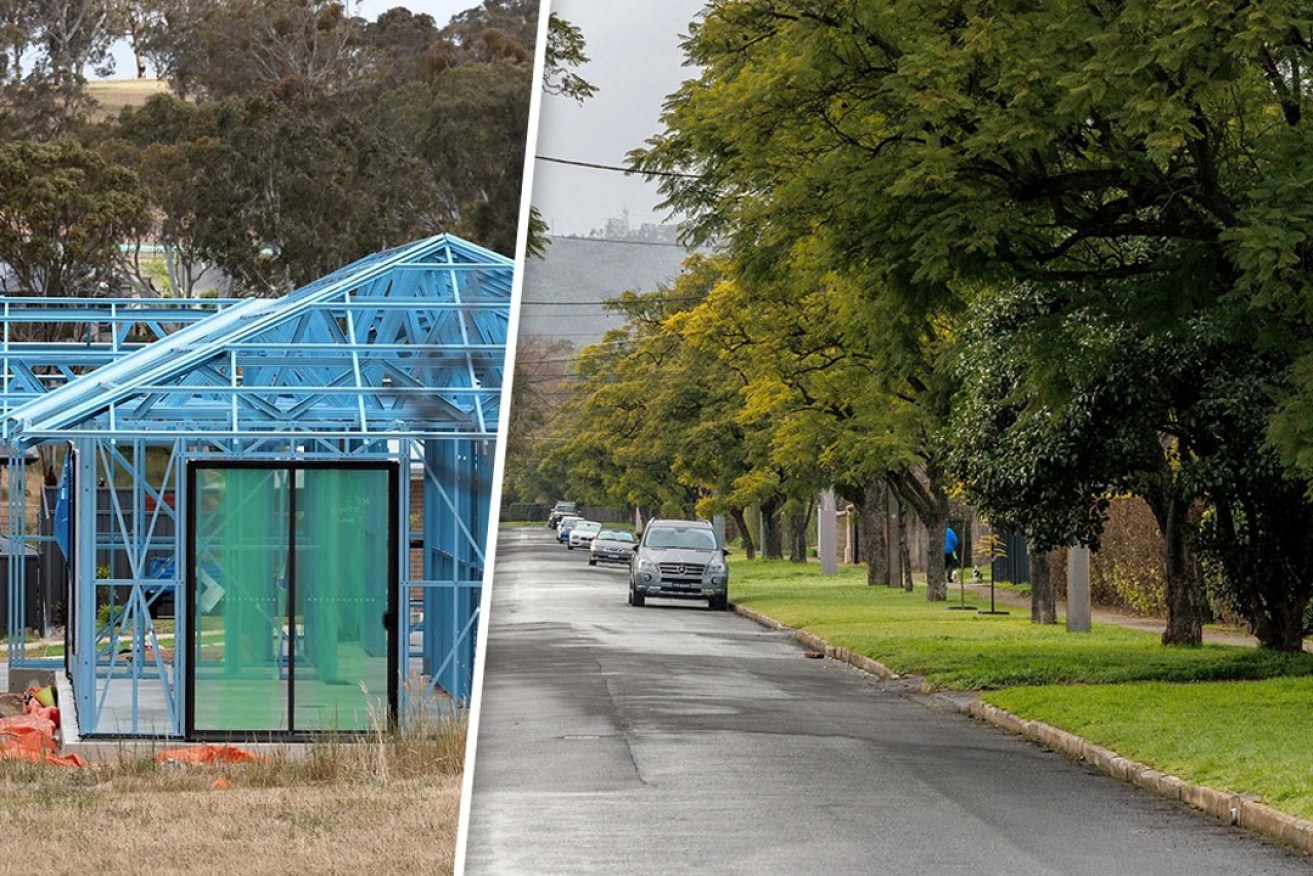
Greenfields subdivisions and established suburbs alike have ongoing infrastructure costs. Photos: Tony Lewis/InDaily
As you travel about our city, you’ll notice a striking variation in the design and feel of different suburbs.
Modern urban living has seen an increasing focus on in denser communities, local shops are mixed among housing, and where walking, cycling and public transport connectivity are desirable characteristics for new development.
These development patterns are encouraged by planning professionals and government policy – not just because of their aesthetics – but because they are often linked to better public health, liveability and environmental outcomes.
What is less appreciated is that these suburbs have the hidden benefit of being more financially sustainable relative to the ongoing maintenance of the essential infrastructure which keeps our suburbs ticking.
Who pays for our suburbs?
Developing land to build new housing is accompanied by an infrastructure price tag: roads, footpaths, stormwater systems, sewerage systems and community facilities such as playgrounds and libraries.
Providing this supporting infrastructure is more expensive in greenfield areas, we know that. That’s because in greenfield developments, such as those on the urban fringe, every piece of essential infrastructure needs to be built from scratch.
Any who pays this cost? Well, even in cases where it’s the developers, the costs are passed directly onto new homeowners in the price they pay for their property.
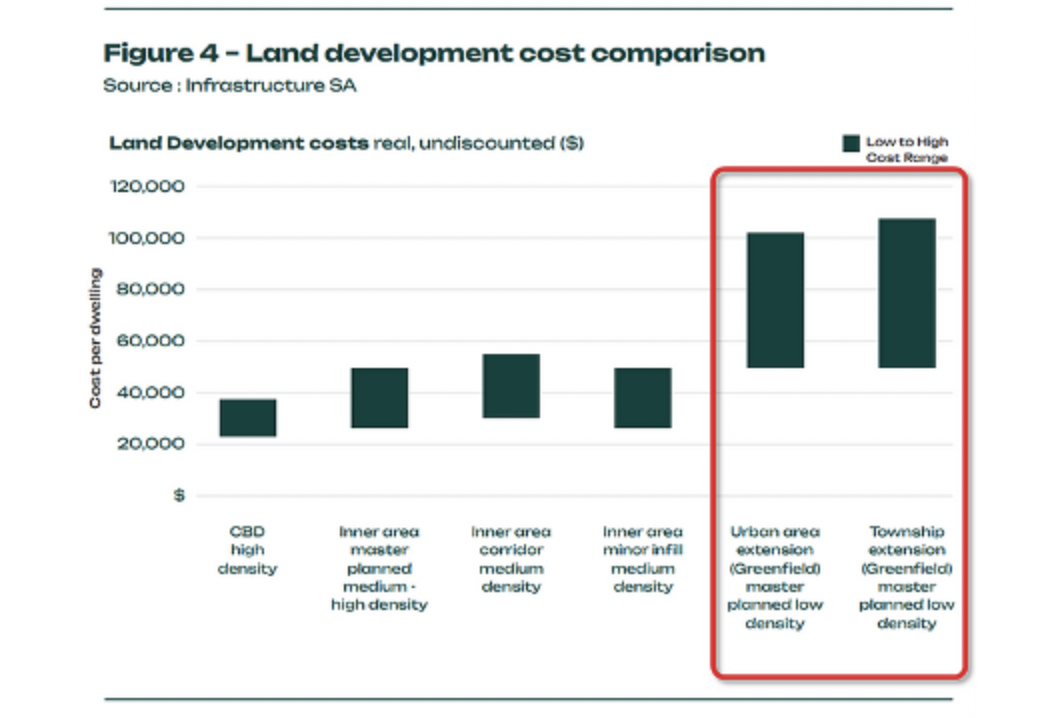
Source: Greater Adelaide Regional Plan Discussion Paper
But these upfront costs are only one part of the picture. Once built, this infrastructure enters an ongoing cycle of maintenance and renewal, at significant cost over the long term. Picture the fresh greenery in your local park, or those smooth new streets around your area; these upgrades aren’t just a facelift, they’re a financial commitment.
And who wears that financial commitment? Local government, which is responsible for hundreds of billions of dollars worth of essential infrastructure across Australia. This infrastructure provides a foundation for your community – and if you’re a property owner most of your council rates go towards paying this maintenance bill.
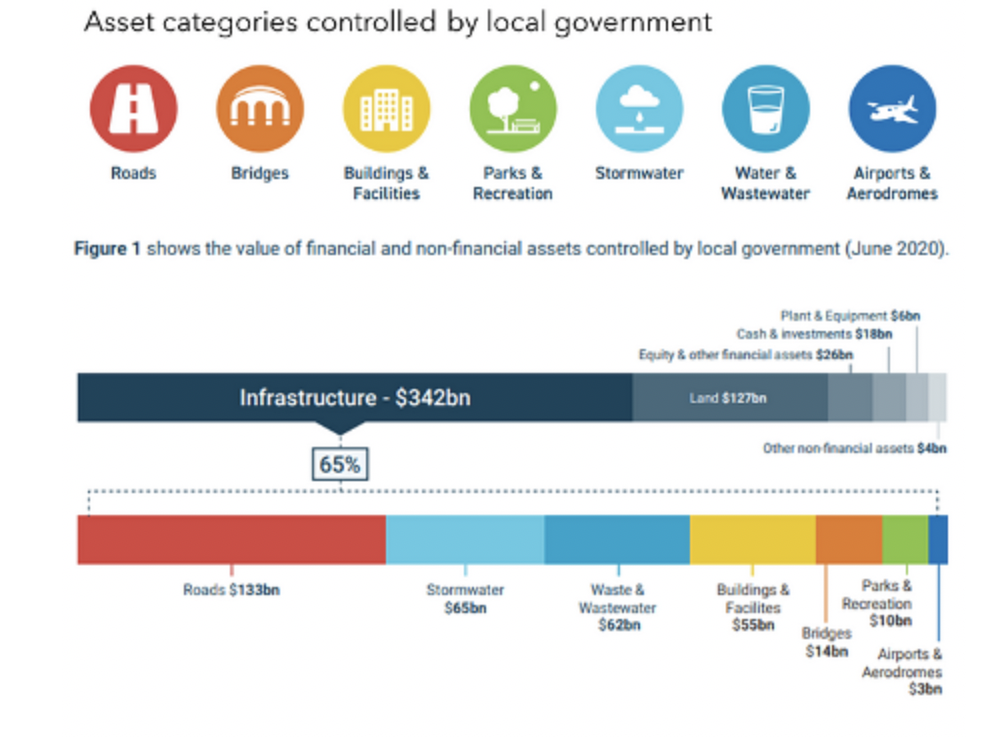
Source: Australian Local Government Association, National State of Assets Report 2021
How do urban planning choices impact local government balance sheets?
Local government revenue is derived from council rates. Higher value properties mean higher rates, but if these don’t match up with the development’s lifelong maintenance costs then local governments are faced with financial trade-offs. They might need to borrow more, hike up taxes, or cut spending elsewhere.
Take a look at Adelaide’s suburbs. Suburbs in the inner south-east and Adelaide Hills unsurprisingly seem like top performers, when only average rates revenue per property is considered. But this ignores the ‘expense’ side of the balance sheet equation – the infrastructure maintenance required to support them.
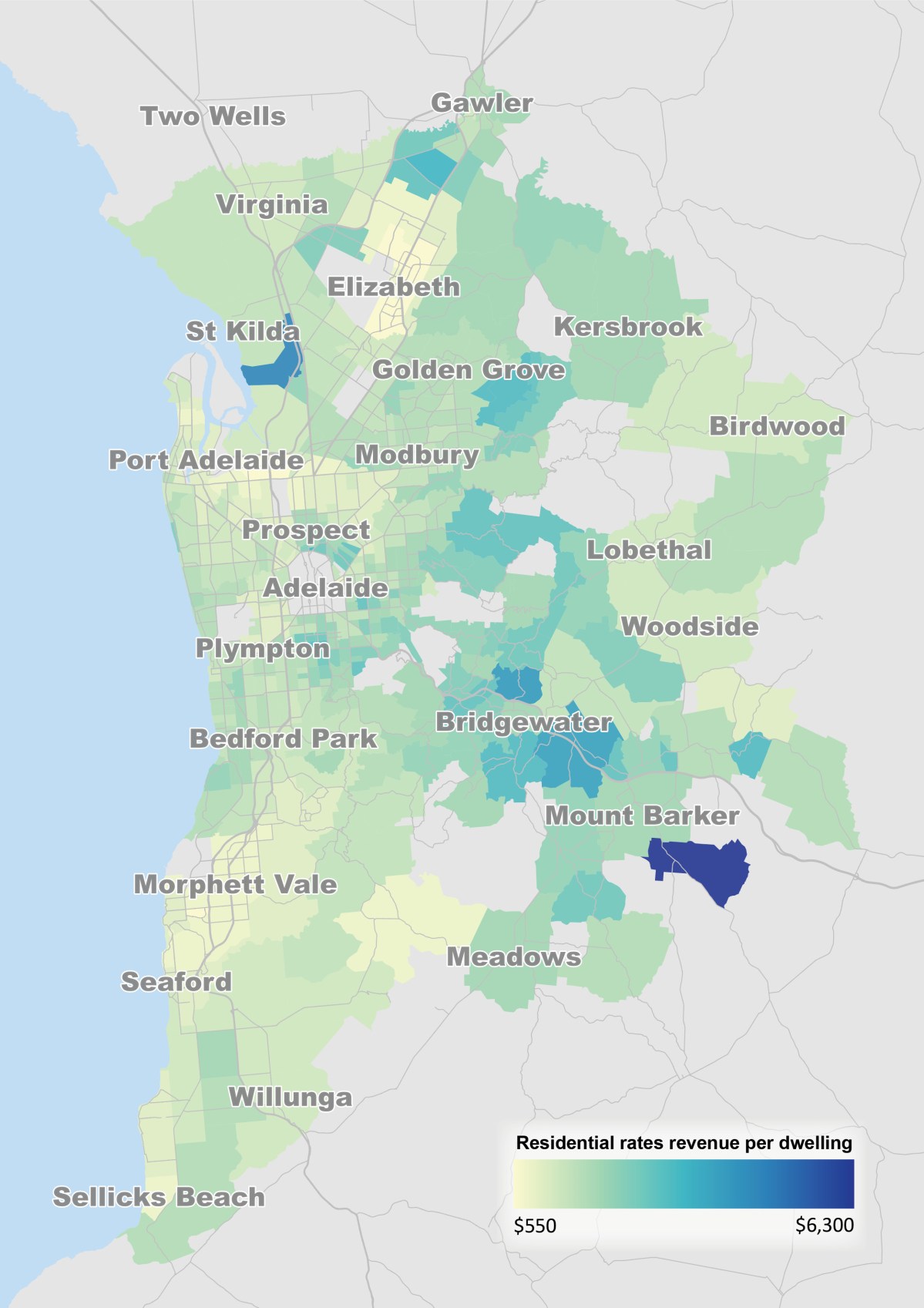
Now let’s add infrastructure to the picture – represented by length of road (because roads are local government’s largest value asset by class across Australia).
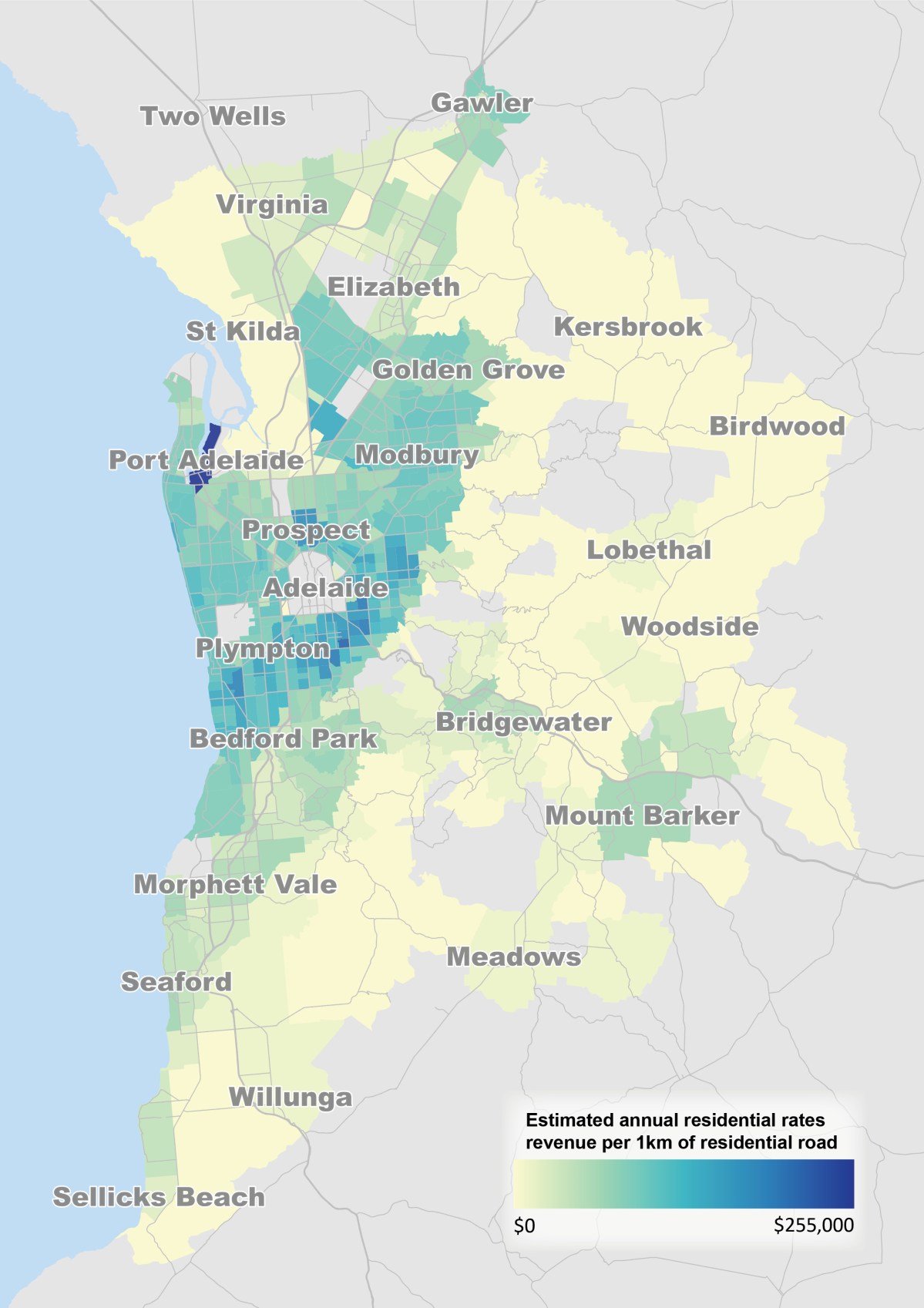
Suddenly, the Adelaide Hills doesn’t perform so well, given the large road network required to support this sparse population. But more traditionally planned, inner and middle ring suburbs? They now stand out as the top performers. Key examples include Port Adelaide, Unley, Prospect, Mawson Lakes and the south-west of the Glenelg Tram Corridor. These suburbs are generally denser, more mixed use and have access to good public transport.
Why do suburbs like Port Adelaide, Mawson Lakes and Prospect outperform Greater Adelaide for financial sustainability?
Their success is due to multiple factors – including a mix of density, proximity to the CBD, and walkable access to amenities. However, our analysis suggests that proximity to the CBD is the least crucial.
Take Prospect and Manningham: similar in distance to the CBD, yet Prospect generates over double the residential rates revenue relative to infrastructure quantity. Why? Prospect’s design is key—its 40km/h pedestrian-friendly, two-lane high street contrasts sharply with Manningham’s 60km/h, four-lane arterial roads. With a higher population density and more accessible local amenities than Manningham, Prospect not only excels in residential revenue relative to it’s infrastructure maintenance burden, but likely also generates higher commercial rates revenue, which although not considered in our analysis would further strengthen Prospect’s performance.
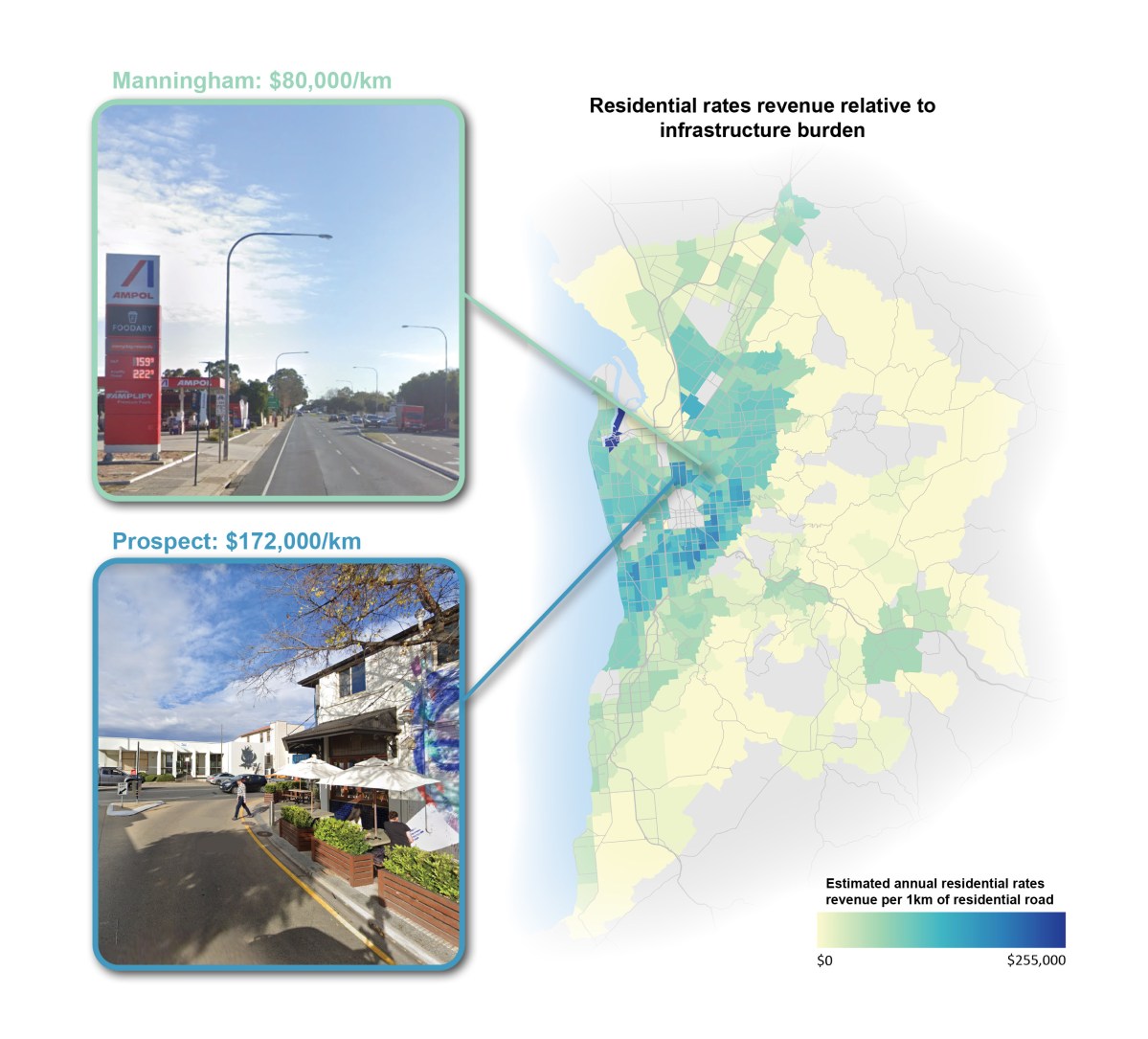
Density, design and diversity aren’t just buzzwords – they’re a blueprint for a financially resilient Adelaide.
Good design, walkable access to amenities and higher population densities aren’t just what buyers want; they’re also a lifeline for local governments managing ever growing long-term infrastructure maintenance costs.
Regardless of location, the ‘living locally’ concept from the Greater Adelaide Regional Plan Discussion Paper isn’t just a nice idea – it’s a financially sound strategy. And after all, it’s the community that ultimately wears the cost for infrastructure through taxes.
As we reimagine Adelaide’s future there lies a choice: to build for short-term gains or to invest in a future where every dollar spend today secures a more prosperous tomorrow for our city. Let’s choose a path that enriches our city for future generations.
For more detail on this analysis, read the full article here.
Daniel Conroy and Daniel Osborne are cities and transport planners in the Adelaide office of Arup, a global firm dedicated to sustainable development.




